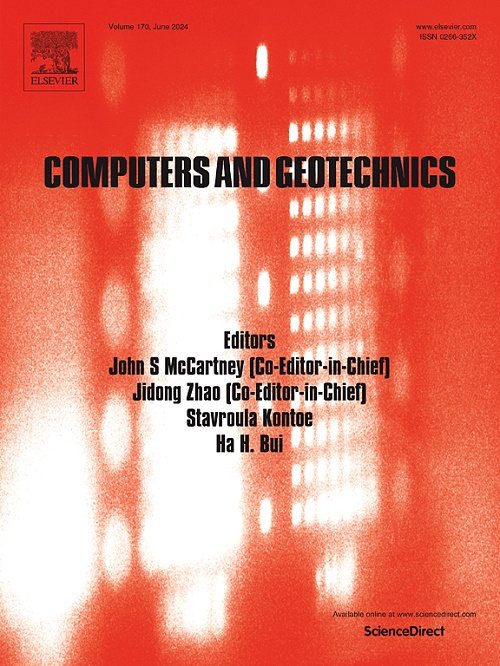Strategically Coupled Inertial Flow and Interface Evolution Model for Cavern Development by Dissolution Mining
IF 5.3
1区 工程技术
Q1 COMPUTER SCIENCE, INTERDISCIPLINARY APPLICATIONS
引用次数: 0
Abstract
Shape control is important for large-scale underground caverns developed by dissolution mining; however, it is greatly complicated by turbulent brine flow and natural and forced convection. An improved model for simulating dissolution mining of large caverns over long injection periods is presented. The brine flow is modeled using the Reynolds-Averaged Navier-Stokes equations coupled with a mass conservation equation governing the evolution of the cavern walls. It is demonstrated that cavern wall irregularities previously assumed to be exclusively due to mineral heterogeneity are also readily attributable to the turbulent flow. Two competing dissolution mechanisms are identified, one enhancing dissolution unevenness and one that smooths out irregular dissolution features on the cavern walls. Two cavern construction methods were investigated: reverse and direct dissolution methods, which tend towards a “morning glory” and a “wide bottom decanter” shaped cavern, respectively. Results suggest that, because of the buoyancy effect, large roof spans are unavoidable without using an oil/air blanket; however, blanket usage leads to more jagged boundaries and can decrease the cavern construction rate. This study opens a path to the development of robust models of large-scale cavern development for energy storage and has implications for similar processes such as leach mining or ice melting.
求助全文
约1分钟内获得全文
求助全文
来源期刊

Computers and Geotechnics
地学-地球科学综合
CiteScore
9.10
自引率
15.10%
发文量
438
审稿时长
45 days
期刊介绍:
The use of computers is firmly established in geotechnical engineering and continues to grow rapidly in both engineering practice and academe. The development of advanced numerical techniques and constitutive modeling, in conjunction with rapid developments in computer hardware, enables problems to be tackled that were unthinkable even a few years ago. Computers and Geotechnics provides an up-to-date reference for engineers and researchers engaged in computer aided analysis and research in geotechnical engineering. The journal is intended for an expeditious dissemination of advanced computer applications across a broad range of geotechnical topics. Contributions on advances in numerical algorithms, computer implementation of new constitutive models and probabilistic methods are especially encouraged.
 求助内容:
求助内容: 应助结果提醒方式:
应助结果提醒方式:


